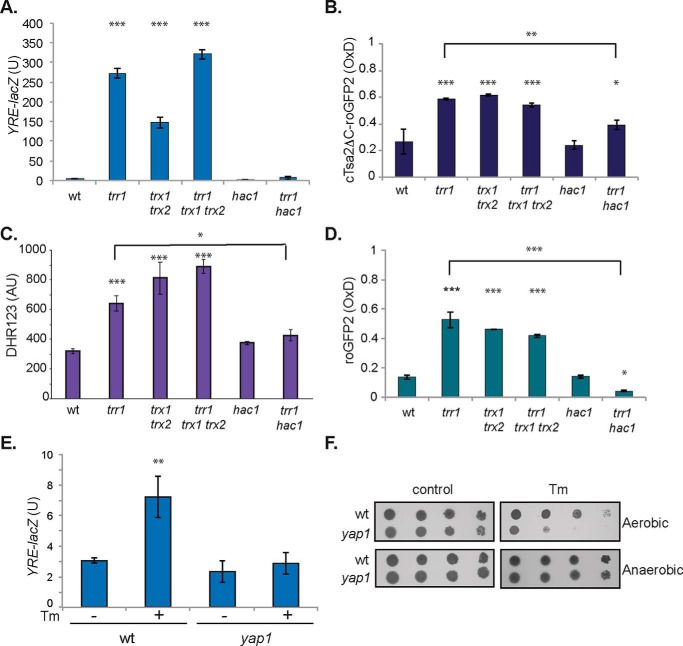Figure 2.
The constitutive UPR in a trr1 mutant generates ROS and induces the Yap1 response. A, the Yap1 response was assayed in WT, trr1, trx1 trx2, trr1 trx1 trx2, hac1, and trr1 hac1 mutant strains containing a YRE::lacZ fusion construct. β-Gal activity data are shown for exponential-phase calls grown in minimal SD medium and are the means of three independent biological repeat experiments ± S.D. B, hydrogen peroxide levels were measured using a peroxiredoxin-based roGFP2-Tsa2ΔCR H2O2 probe in the indicated strains. The degree of sensor OxD is shown with OxD = 1 for the fully oxidized probe and OxD = 0 for the fully reduced probe. Data shown are the means of three independent biological repeat experiments ± S.D. C, ROS generation was measured in the indicated strains using DHR123. D, cytosolic GSH redox potentials were measured in strains using a roGFP2 fluorescent probe that equilibrates with the local GSH pool. Data shown are the means of at least three independent biological repeat experiments ± S.D. E, the Yap1 response is induced in response to ER stress. YRE::lacZ activity was measured in the WT and yap1 mutant strains treated with 1 μg/ml Tm for 2 h. Data shown are the means of three independent biological repeat experiments ± S.D. F, mutants deleted for YAP1 are sensitive to ER stress induced by Tm exposure. Strains were grown to stationary phase, and the A600 was adjusted to 1, 0.1, 0.01, or 0.001 before spotting onto SD plates in the presence or absence of 0.4 μg/ml tunicamycin under aerobic or anaerobic growth conditions. Significance is shown compared with the WT strain: *, p < 0.05; **, p < 0.01; ***, p < 0.001.

